755152 Flight Sergeant Jack Flockhart
Air Gunner, RAFVR
149 (East India Sqn) RAF
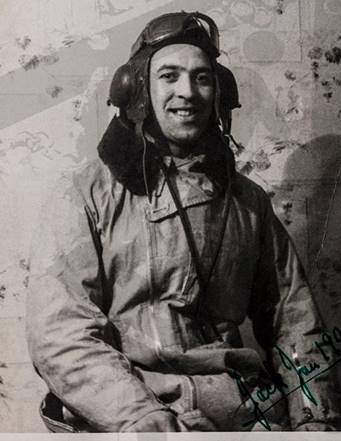
A brief History of his time with 149 (East India) Squadron, RAF
By Alan Fraser
149 Squadron Historian
A young John Spring Flockhart, known as Jack, volunteered for Aircrew and would have been attested for the RAF (VR) as an AC2 (Aircraftman Second Class). Like most volunteers, he probably had visions of being a Pilot and was accepted for aircrew selection and training. His future would lie with the Air Gunner trade.
Basic Training
Initial Training would have been at an ITW (Initial Training Wing) at one of the dispersed centres springing up. There he would have been subject to the normal one or two days being kitted out, getting injections and checking over by a doctor or dentist. This was followed by the usual five to eight weeks of Basic Training, which was more directed to making the airman into a soldier, rather than an airman. Discipline was already important.
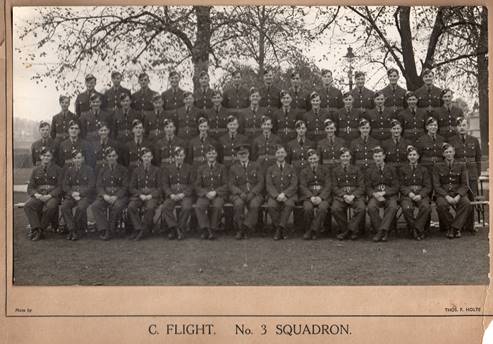
A typical course at ITW.
Here, aircrew cadets learned to march, did lots of PT and went to classes. They were accommodated in requisitioned boarding houses and hotels. ‘Permanent staff’ were billeted in boarding houses and the HQ was usually located in a local hotel.
This Basic Training was initially carried out by regular RAF discipline instructors, of Corporal or Sergeant Rank. It was a great source of unhappiness that the recruits these regulars were training would be the same, or higher rank than them in a relatively short time period.
At the start of the war, most pilots and observers were commissioned officers or senior NCOs. The people who flew as gunners and radio operators were normally taken from the ranks of the 'Erks' on a squadron. Aircraftman 1st and 2nd class manning the guns and/or turrets, and the radios were the 'norm'. As the war progressed and aircrew were shot down and captured, the authorities decided that they should make all flight crew a minimum rank of Sergeant, ostensibly to ensure that they were correctly treated if captured. Even then, the two groups were often split on capture into officers and airmen camps.
After the basic training was accomplished, the recruits were subjected to a 'streaming' process, where their qualifications and more importantly their aptitudes were measured and considered. Initially, these streams were either ‘Pilot/Observer’ or 'the rest', who made up the crew's gunners and radio operators. Later on in the war these streams were divided into ‘Pilot/Bomb Aimer/Navigator’ (PBN) and 'the rest', who made up the crew's flight engineers, gunners and radio operators.
Basic gunnery training
Then it would have been off to an EAGS (Elementary Air Gunner School) at somewhere like RAF Bridgenorth for 6 weeks.
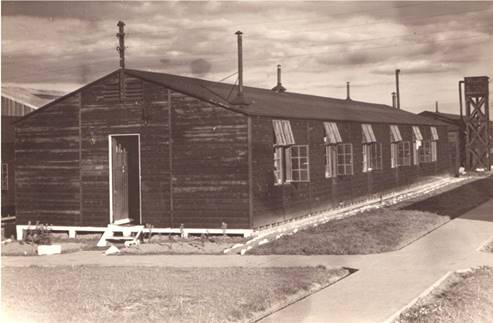
The height of Luxury! RAF Bridgnorth barracks hut
The EAGS instructors had all done a tour of Ops. (30 Ops, a full tour, was rewarded with a minimum of 6 months screened from Ops). In addition to lectures, real life incidents made the Instructors appear a grand example to the Trainees. Their schooling and comments on life in the RAF helped the trainees cope with the conditions and hardships of training. All aircrew were volunteers and could cease training before flying, without detriment to their record. Leaving after commencing flying led to a charge of LMF (lack of moral fibre).
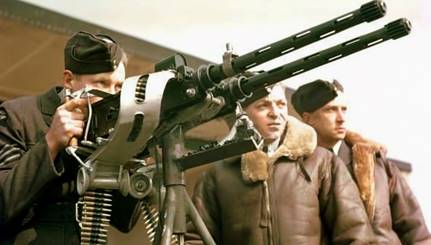
In Basic Gunnery the main thing they would have been taught was turret work ... they learned how the turret lifted the guns up and down again, how to harmonise the guns - you've got four guns and so what you want to do is put the most bullets in the centre, so when you're looking down the sight you can see the dot in the middle, and you want to put your bullets there. This was called harmonising the guns. They also learned about the 'bullet drop', calculating the curve of fire and learning how to aim at targets in the air, how to build and strip down the .303 guns (eventually assembling them blindfolded) and finding faults on those guns.
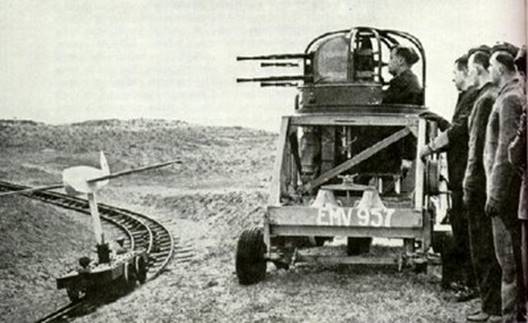
Early Air Gunner Training
One gunnery instructor at Bridgenorth, W/O 'Jock Hunter', had done his Ops on Hampden aircraft and was famous with the trainees for his use of the word 'deflection'. In gunnery terms he regarded this as essential to being a good air gunner. 'Deflection is the distance travelled by the target during the time of the flight of the bullet', he said. He would pause in a lecture and snap at a trainee. ‘What IS deflection?’ The chap had to know it off pat. This could happen three or four times in the course of an hour's lecture. They soon knew what deflection was!
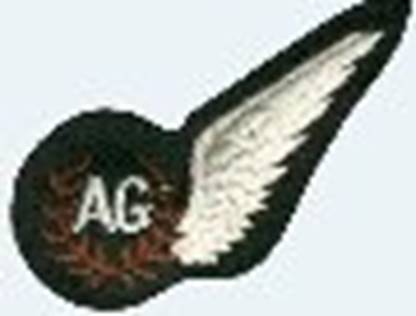
When a trainee air gunner completed his training he was given his air gunner's brevet (The badge, above) and promoted to sergeant. So Jack got his “wing” and passed out as a Sergeant, with a Sergeant's pay (8 shillings a day). The next posting was to his Operational Unit, No 149 (East India) Squadron.
Usually, newly qualified aircrew would group together themselves - a Pilot, Navigator, Bomb Aimer, Wireless Operator and an Air Gunner, whilst at an OTU (Operational Training Unit) Later, the other gunner and a flight engineer joined them at the HCU – (Heavy Conversion Unit).In Jack’s case, it appears he was drafted in as a replacement on Squadron Leader Harris’ crew.
149 (East India) Squadron, Royal Air Force.
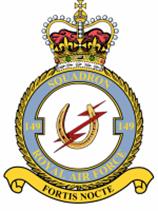
"As war approached, No 149 (East India) Squadron, which had served briefly in World War I, was re-formed in 1937 at RAF Mildenhall as a night heavy bomber unit. It was initially equipped with the last RAF heavy bomber biplane, the Handley Page Heyford, but not for long. In early 1939 these were replaced with the new, geodetic structured, Vickers ‘Wellingtons’.
Designed by Barnes Wallis, of Dam Buster fame, these were sturdy, reliable aircraft which could absorb a great amount of damage and still return home.
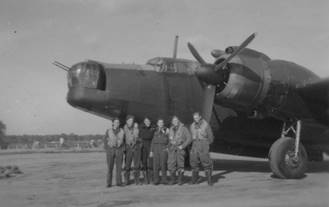
Wellington 1c of 149 Sqn – source unknown
Then along came the mighty Short’s Stirling aircraft. Various constraints had turned the original design into an aircraft which was badly behaved on the ground, very manoeuvrable at low and medium altitude, but sadly deficient at its operational ceiling of twelve to fifteen thousand feet.
Looking a bit like a bulldog, with exceptionally long legs at the front, the Stirling either was loved or hated….or both depending on the latest flight. The aircraft served 149 Squadron right up until its withdrawal from main stream bombing in 1944, due to unacceptable losses when employed in this role.
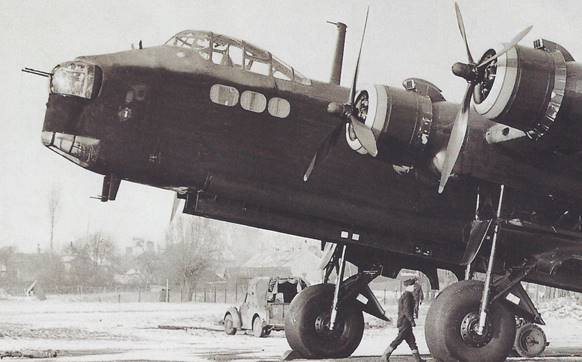
Mk 1 Stirling – source IWM
Although the Stirling could happily out-turn a Hurricane at low level, the usual bombing altitude of 12,000 to 15,000ft made them vulnerable to searchlights, flak and night fighters. Many were also lost through Take-off and Landing accidents during its service period, as well as to the Flack and Fighters.
Operational Flying.
The crew, unless stated otherwise, were:
Sqn Ldr R B Harris Pilot (posted in to 149 Sqdn 3/5/42)
Sgt F D Lindsay Observer
Sgt S D England Wireless Operator
Sgt J S Flockhart Air Gunner (Mid Upper)
Sgt J Easting Flight Engineer
Sgt J Parris W/OpAG (Front Gunner)
Sgt N Kortright Air Gunner (Rear Gunner)
Sgt Flockhart had only recently joined the crew of S/Ldr Harris and completed three Operations with them before being lost along with the rest of the crew. Before his arrival the ORB records that S/Ldr Harris flew with a crew of six.

1st Operation.
The first trip for Jack with this crew, was a bombing Operation to Essen, on the 1st Jun, 1942 . They reported that their bombs dropped on the factory area and the incendiaries were burning well.
2nd Operation.
This Operation was a repeated bombing Operation to Essen on the 2nd Jun ’42 but failed due to a rear turret failure. Bombs were jettisoned over the sea.
3rd Operation.
His third trip was on the 5th June, 1942, when Essen was the target yet again. The ORB report simply says, ‘Aircraft failed to return.’
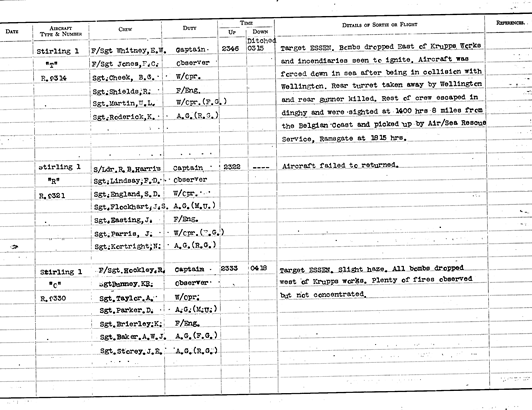
The Operation on the 5th/ 6th was not a ‘1000’ bomber raid. There had been two previously and one came after Jack’s loss.
Stirling OJ-R coded R9321 was claimed by Ofw. Heinz Struning of 7./NJG2 as his 17th air victory
.
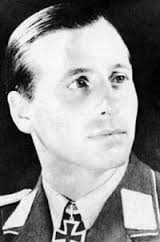
Leutnant H Struning Knights cross with Cluster.
Ltnt. Struning went on to command 7./NJG2, down 56 bombers and be highly decorated before being KIA in 1944.
The aircraft fell at Duisburg with no survivors. Jack now lies in the Reichswald Forest War Cemetery in plot 9.F.4
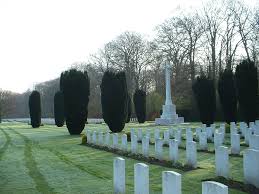
Reichswald Forest Cemetery
During Jack’s war time service he would have been awarded :
The 1939-43 Star (Aircrew Europe)
The Defence Medal
The Victory Medal
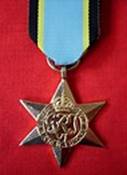  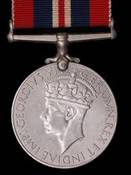
He would also be entitled to wear the Bomber Command Clasp.
compiled by A. Fraser
149 (East India)Squadron Historian
Sources:
149 Sqn Archives
149 Sqn ORBs
W Chorley’s BCL Vol IV
J Johnston’s ‘Strong by Night’, a history of 149 Squadron.
Theo Boiten’s ‘Nachtjagd War Diaries’
IWM
Return to Index
|
 Stirling Pilott
Stirling Pilott 
 Stirling Pilott
Stirling Pilott 